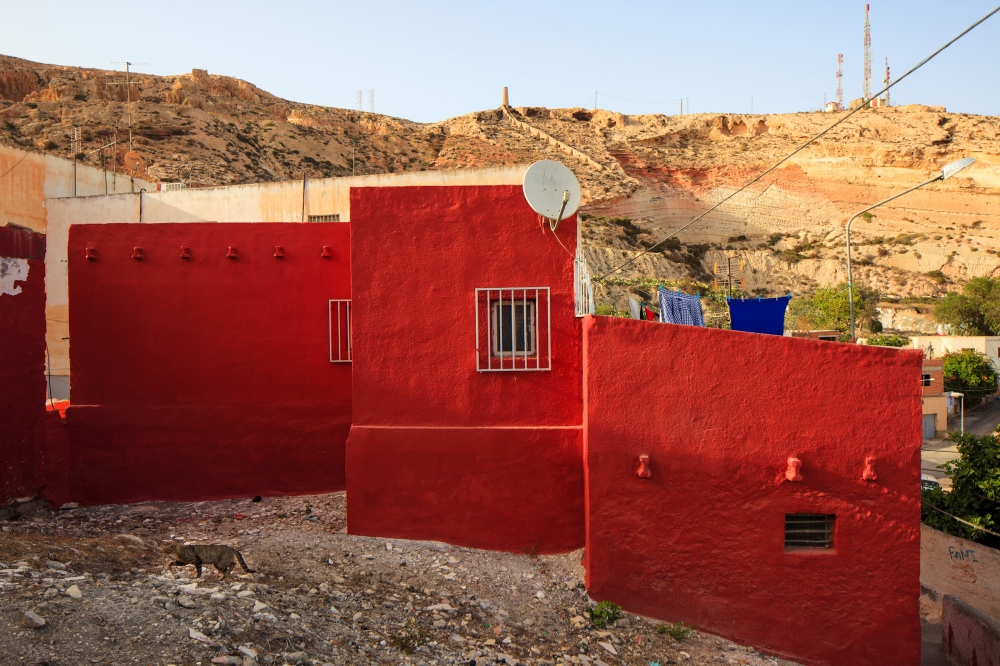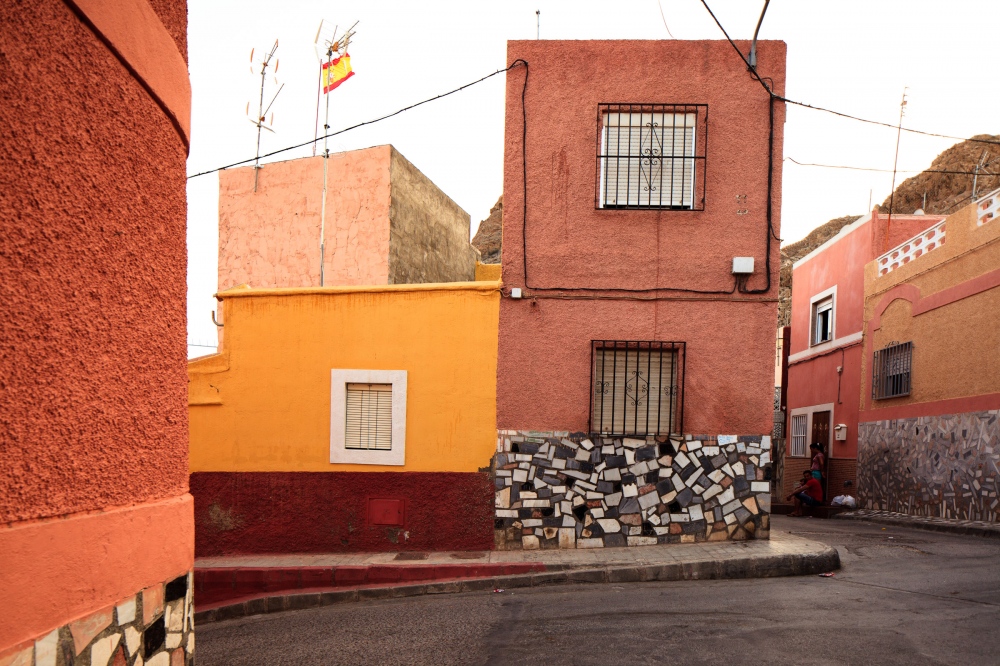La Chanca is a colorful but impoverished community of gypsies and immigrants hanging from a mountainside on the outskirts of the city of Almería in southern Spain. Throughout the past century, including four decades of Spanish dictatorship, the community served as a conflicted symbol of both oppression and resilience, attracting a stream of artists, writers, and social reformers. I have a personal connection to the region through my mother's family and have been exploring, researching, and photographing La Chanca over the past two years with a goal of understanding its conflicts and visible layers of history.
PROJECT STATEMENTLa Chanca is a historically impoverished zone made up of small dwellings built into a hillside on the outskirts of the city of Almería in southern Spain. The inhabitants constructed their homes using whatever materials were available, resulting in a multicolored patchwork and a unique visual landscape. La Chanca has long been home to a diverse population, including fishermen and their families, a strong community of gypsies, and, more recently, immigrants from Morocco. Over the years, the zone has attracted writers, artists, and photographers inspired by its unique urban structure and cultural mix. Yet today it still remains isolated and on the margins.
My interest in the neighborhood of La Chanca is both personal and conceptual. My mother's family is from Almería and I have been traveling there most of my life. As a child, my grandmother warned me to stay away from La Chanca as a dangerous place. While I come to La Chanca as an outsider, I aim to better understand the region my family left behind decades ago. Professionally, I was trained and work as an epidemiologist, and this has come to inform my photography over time. Instead of focusing on the individual, epidemiologists study populations of people. They seek to understand the causes " social, economic, and environmental, as well as biological " that are behind the patterns they observe in health and disease. Thus I became intrigued by the complex organization of the community of La Chanca.
Visually, a network of streets and architectural juxtapositions serve as evidence of ongoing economic and social change. As entire civilizations have come and gone, Almería has served as a point of passage between Africa and Europe, with La Chanca being the port of entry. Under the Franco regime during the 1950s and 1960s, La Chanca was used by official organizations to promote tourism. They portrayed it as an exemplar of traditional "˜unspoiled' Spanish village life. At the same time, critics pointed to La Chanca as evidence of the hopelessness and disease that were endemic among those communities left behind by the regime.
More recently, La Chanca has gained international attention for its unique model of social organization and integration. City services do not extend up the steep, winding streets, so residents have developed cooperatives to clean and maintain public spaces. The public school includes classes in Arabic language and culture, and students learn about the diverse history of the region through musical performances and festivals.
In creating this body of work, I have conducted research over several years, analyzing historical records and visiting the area with local residents, artists, and community activists connected to the subject. I am an active member of the Instituto de Estudios Almerienses, a local organization that supports research into the history of the region. Collaboration with neighborhood organizations and social activists has been crucial to understanding the context and history of the location.
While I have a substantial body of photographic work around La Chanca, I plan to extend this work, including adding video to give viewers a sense of what it is like to move through this web-like neighborhood. My goal is to produce a photobook and accompanying website that will combine photographs and writing to document the complex history of La Chanca.
http://www.parascandola.com/la-chanca-optimized/





























